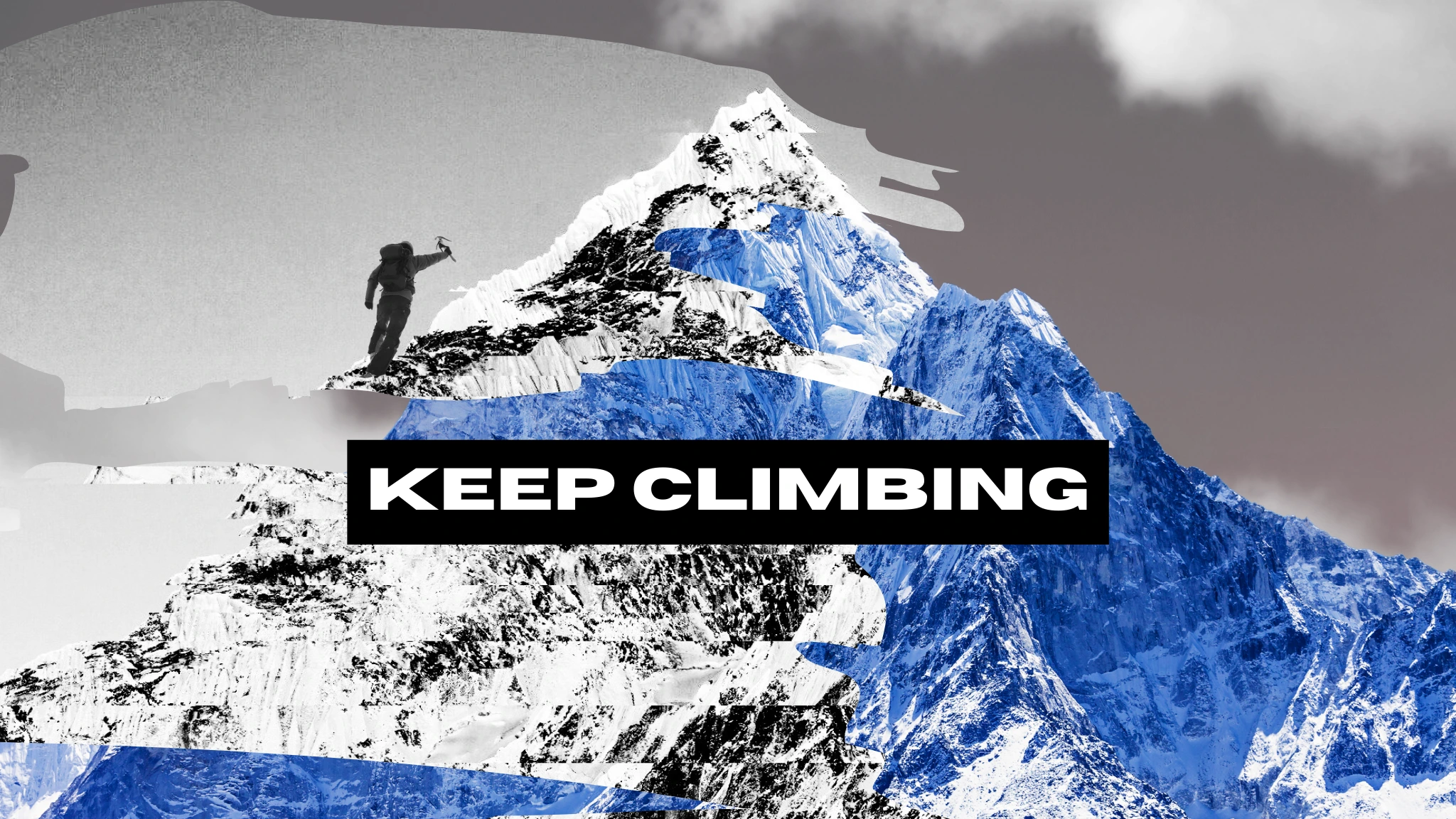It’s called “summit fever” — the compulsion to ascend a mountain or rockface by any means necessary. It’s a phenomenon plenty of climbers have attested to as they’ve ascended “the seven summits,” the highest mountains on each of the continents. But what exactly is it about these monuments of nature that call to us, that compel climbers to take their lives into their own hands and defy all sense of self-preservation?
While some of it may be the prestige of taking on these notorious climbs, many climbers speak of something much harder to define, but something that supersedes anything close to bragging rights. It’s the rewarding experience of standing on the highest point, looking down at the world around them, at the treacherous path that led them to this moment of awe and self-reflection. It’s little wonder that so many of these peaks are spiritual landmarks, famous for their power to change the lives of those who step foot upon them.
While these seven books may not tackle all seven summits, they show climbers’ journeys around the world — from a journey up the world’s longest free climbing route in Yosemite to a tale of spiritual awakening on Everest’s peak. These books are packed with life lessons, not only for those looking to climb, but for anyone looking for new perspectives on life or tales of heart-pounding adventure.
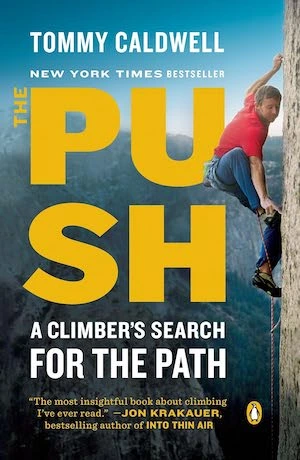
The Push: A Climber’s Journey of Endurance, Risk and Going Beyond Limits to Climb the Dawn Wall by Tommy Caldwell
Named by National Geographic as “arguably the best all-around rock climber on the planet,” Tommy Caldwell was launched into the sport at an early age by his mountain guide parents, helped by annual family trips to Yosemite National Park. But that doesn’t mean he had an entirely smooth journey. In 2000, he and three other American climbers were held hostage for six days by rebels in Kyrgyzstan, only narrowly escaping with their lives. Just a year later, he lost his left index finger and was told by his doctor he may never climb again.
Well, not only did Caldwell climb again, but beginning on December 27th, 2014, he and his climbing partner, Kevin Jorgeson, scaled the Dawn Wall of El Capitan in Yosemite Valley. The ascent took 19 days in total and became known as the hardest and longest free climbing route in the world. Each day of the incredible journey is documented in Caldwell’s memoir — as well as the seven years of preparation it took, spanning from a failing marriage to finding new love and purpose as a husband and father. The Push doesn’t just show readers the perseverance of Caldwell himself, but the inner strength and determination we all have the potential for.
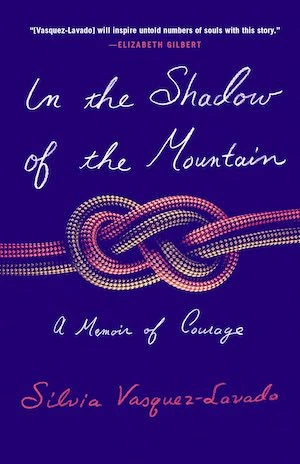
In the Shadow of the Mountain: A Memoir of Courage by Silvia Vasquez-Lavado
On the surface, Silvia Vasquez-Lavado was the poster child of progress as a Latina in the male-dominated tech industry of Silicon Valley. But privately, she was coming undone. She was hiding everything from her family and those around her — her alcoholism, her sexuality and the horrific abuse she suffered in childhood. Part of her was even hiding all that from herself, not able to face the true extent of her suffering. But then, she began to climb.
Vasquez-Lavado’s memoir chronicles her journey from the depths of her trauma to her triumphant ascent of Mount Everest — an expedition she led alongside fellow female survivors of abuse, all to face the world’s highest mountain. Their journey was a perilous one, with the summit squarely in what’s known as the Death Zone — a place where the air is so thin that the human body begins to shut down. But Vasquez-Lavado and her companions forged through this inhospitable environment, sharing moments of clarity and healing as they made the unbelievable climb. In the Shadow of the Mountain is a book that tests the boundaries of what a memoir can be, bringing readers on the treacherous journey as if they, too, are scaling the mountain alongside the author.
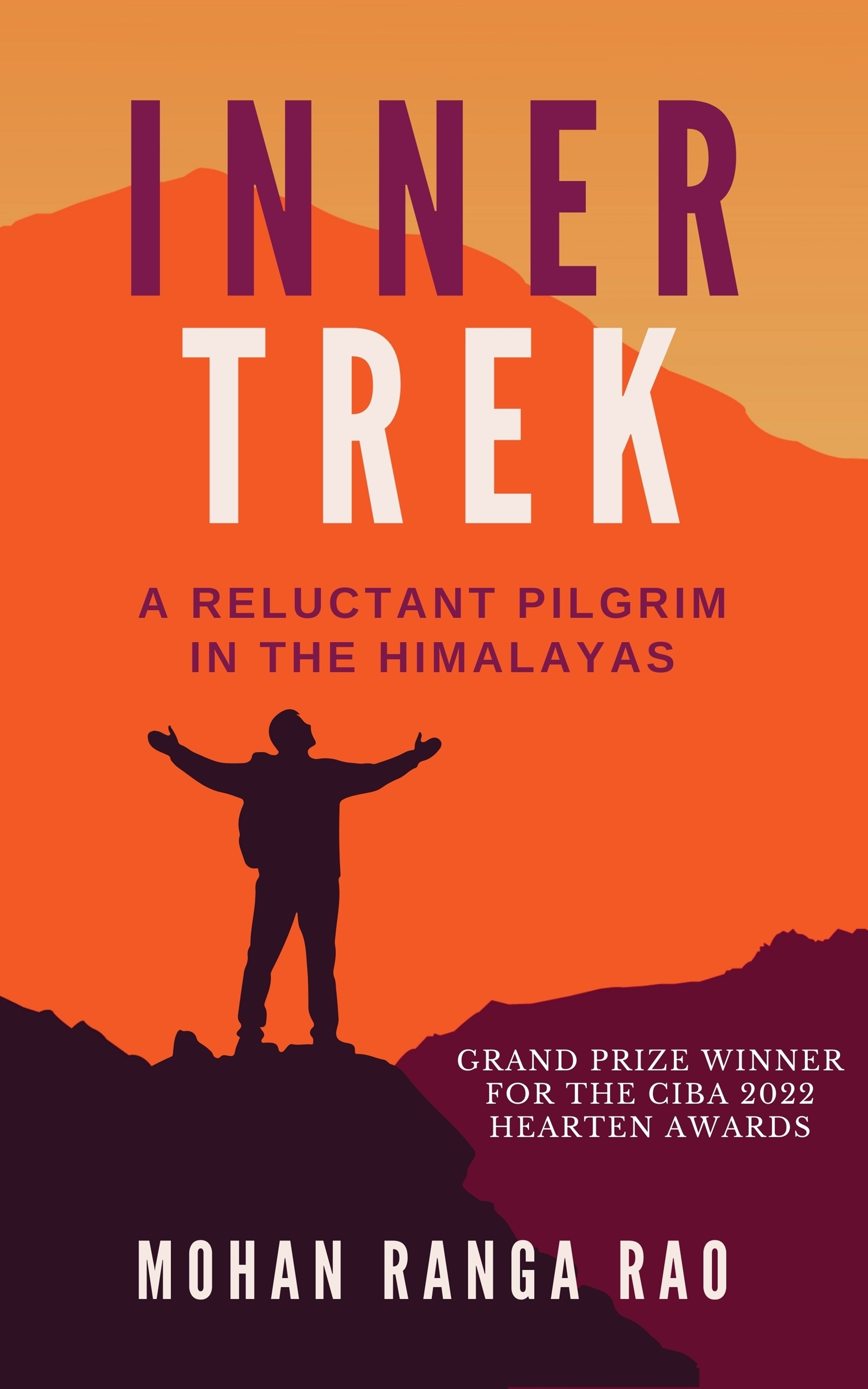
Inner Trek: A Reluctant Pilgrim in the Himalayas by Mohan Ranga Rao
Mohan Ranga Rao didn’t originally plan to climb Mount Everest. While the mountain is part of the Kailash Mansarovar — a sacred pilgrimage through several of the Himalayas — he had never seen a reason to take on the daunting endeavor. But all that changed after a scare with a Bangalore mob boss. Alongside his more spiritual wife, Rao embarked on the journey skywards, unsure of what to expect of the high-altitude climb. But what he at first considered to be a physically demanding trek became an experience that spanned the full breadth of what life has to offer, from triumphant highs to disheartening lows, all culminating in a spiritual awakening at 18,000 feet above sea level.
Rao’s memoir, Inner Trek, takes the reader up the mountain to experience the pilgrimage in full, from the countless dangers to moments of reflection that forever changed Rao’s life. The immersive book blends spiritualism with action and adventure, guiding us up the mountain alongside Rao, his wife and the other adventurers they met along the way — all with the common goal of making it to the summit, to experience the beautiful, divine view that so few on this earth have witnessed.
You can read our full review of Inner Trek here, along with our interview with the author.
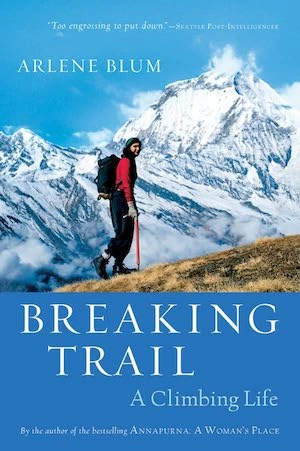
Breaking Trail: A Climbing Life by Arlene Blum
Arlene Blum is a legend in the world of climbing. A pioneer for women climbers in the 1970s, she led the first all-female teams on Denali and Annapurna, two mountains considered even more deadly than Mount Everest — which she also became the first American woman to even attempt. But Blum wasn’t just challenging gender stereotypes on the mountainside, but in her professional work as well. A scientist to be reckoned with, she embarked on a mission to ban carcinogens in children’s sleepwear and lead the cause towards essential legislation that finally prohibited the practice.
Breaking Trail chronicles not only Blum’s fight for respect and fair treatment, but the path that first set her on her way to the world’s fiercest mountains. From her humble beginnings as an overprotected child in Chicago to her current status as a trailblazer in the world of mountaineering, Blum had to fight tooth and nail to be respected by her peers in two male-dominated fields: climbing and scientific academia. Her life story is an inspiration not just to those looking to summit mountains, but to all of us who have risks worth taking to pursue what we truly want out of life.
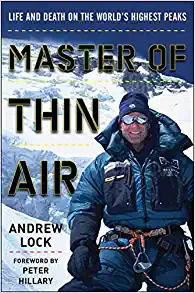
Master of Thin Air: Life and Death on the World’s Highest Peaks by Andrew Lock
Andrew Lock’s memoir opens on K2, also known as the Savage Mountain. And what’s Lock doing on K2? He’s narrowly avoiding death, barely managing to catch himself as he slides down a near-vertical rock ramp towards a 3,000-foot drop below. Named by Backpacker Magazine one of the “Five Adventure Books You Need to Read This Summer,” Master of Thin Air tells the incredible story of a man who’s conquered each of the 14 “eight-thousanders” that take climbers up into the death zone — 13 of which, he climbed without any supplemental bottled oxygen. Lock has witnessed everything the mountains have to offer, from the joy and human connection of the climbing community to tragic losses along the way, and even an up-close look at Everest’s deadliest avalanche.
Lock’s memoir gives us a glimpse into the mind of a man who’s solidified his legacy upon those awe-inspiring mountains. Now retired from climbing, he shares his wisdom with readers — not just the how-tos of climbing, but of how the experience impacts the rest of your life. “The mountains are a medium through which we can discover who we really are,” he writes in Master of Thin Air. “Altitude exposes our strengths and weaknesses, our true characters … It absorbed me and blessed me with insight into another dimension of existence that only a lucky few will ever experience.”
You can read our full review of Lock’s memoir here.
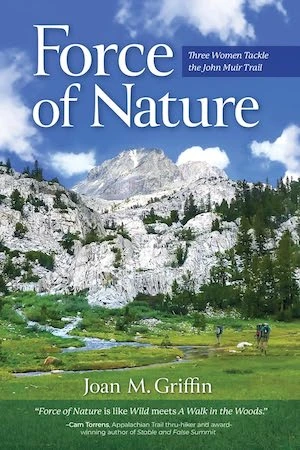
Force of Nature: Three Women Tackle the John Muir Trail by Joan M. Griffin
The Himalayas aren’t the only mountain range worth climbing. Considered by some to be “the most beautiful long-distance trail in the world,” the John Muir trail stretches across the Sierra Nevada mountains, passing through Yosemite and Kings Canyon into Sequoia National Park. And over the course of 27 days, author Joan M. Griffin and her two friends — all of whom, women in their fifties — made the over 200-mile trek. They faced everything from injuries to lightning storms at eleven-thousand feet, and even “adopted” a young hiker into their group after she was abandoned by her own hiking partner.
Half adventure memoir and half nature writing, Griffin’s tale of perseverance and grit holds the power to be inspirational to every reader, from highly experienced hikers to those of us who prefer to go on adventures from the comfort of our reading nooks. Throughout her entire journey, Griffin embraced everything the John Muir trail threw her way and met it head on — dancing in the moonlight, walking through a raging waterfall and surveying her home state of California from the Sierra Nevada’s highest peak. This inspirational memoir encourages us to look for the beauty in the natural world and the unforgettable in our everyday, and to remind us that there is no age limit on adventure.
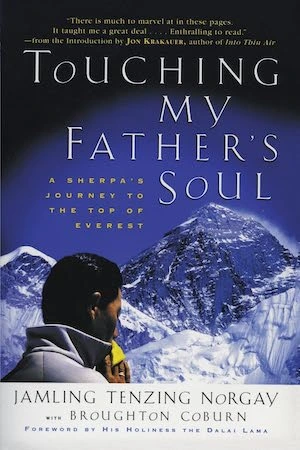
Touching My Father’s Soul: A Sherpa’s Journey to the Top of Everest by Jamling Tenzing Norgay
We’ve heard from several authors who’ve traveled from all around the world to climb Everest. But what about the tale of a Sherpa? The name is both a Tibetan ethnic group native to the area of the Himalayas, and the moniker for the guides who assist foreign climbers in their ascent to the summit of Mount Everest, known for their skill in mountaineering at high altitudes.
In 1953, a Sherpa by the name of Tenzing Norgay completed the first recorded summiting of Mount Everest alongside Sir Edmund Hillary. Now in the modern day, his son reflects on his family legacy upon the mountain in his memoir. Touching My Father’s Soul, chronicles his career as a mountain guide, previously untold tales of his father’s historic journey skywards and his own summiting experience — the last of which occurred during the May 1996 Mount Everest disaster, when a sudden blizzard took the lives of 8 climbers.
Norgay’s memoir opens a door to the rarely seen inner world of Sherpa guides on Everest, from the spiritual importance of the mountains to the unique experience of guiding foreigners through a sacred and unforgiving landscape that has claimed so many. And, closer to the heart, Norgay shares the personal motivation that led him to climb the summit: the hope that, by following in those historic footsteps, he would be able to better understand his late father.

